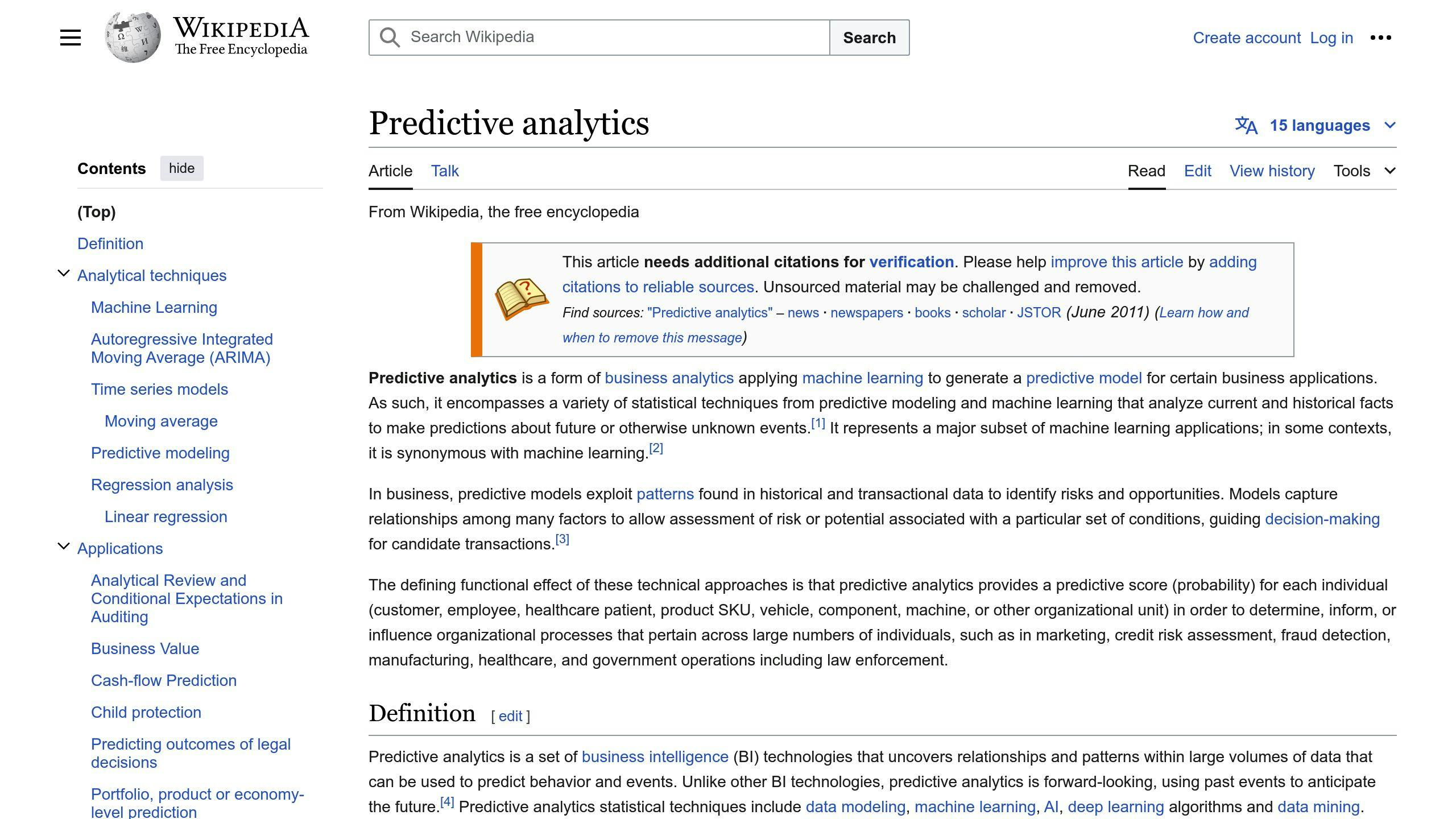May 31, 2024

Restaurants often face long wait times due to understaffing, poor queue management, and inefficient kitchen operations. This leads to frustrated customers, negative reviews, and loss of business. AI predictive ordering offers a simple solution by using machine learning to accurately forecast demand, optimize inventory levels, and streamline kitchen operations - minimizing wait times and improving customer satisfaction.
Key Benefits:
How It Works:
Traditional vs. AI Predictive Ordering:
MethodAccuracyEfficiencyScalabilityCost SavingsTraditionalLow-ModerateLow-ModerateLimitedLimitedAI Predictive OrderingHighHighHighHigh
To get started, restaurants need to integrate with existing systems, collect data, select algorithms, and deploy the AI system. Potential challenges include data quality, system integration, staff training, and upfront costs.
Long wait times are a common issue at restaurants, leading to unhappy customers and lost business. But what causes these delays? In this section, we'll explore the reasons behind long wait times and their impact.
Several factors contribute to long wait times:
The impact of long wait times can be severe:
ConsequenceDescriptionNegative ReviewsFrustrated customers may leave negative reviews, damaging the restaurant's reputation.Customer Loss75% of businesses report losing customers due to excessive waiting times.Lost RevenueLong waits can lead to lost revenue opportunities as customers may not return or recommend the restaurant.Increased CostsRestaurants may need to hire more staff or invest in new systems to improve efficiency, increasing operational costs.Reputation DamageNegative word-of-mouth and online reviews can harm the restaurant's reputation, making it harder to attract new customers.

Restaurants often face long wait times, leading to unhappy customers and lost business. AI predictive ordering offers a straightforward solution to this problem. By using AI and machine learning, restaurants can accurately forecast demand, optimize inventory, and streamline kitchen operations - reducing wait times and improving customer satisfaction.
The system collects data from various sources, including:
This data trains machine learning algorithms to predict demand and identify customer behavior patterns. The system then adjusts inventory levels and kitchen production in real-time to ensure the right items are prepared at the right time.
BenefitDescriptionImproved Inventory ManagementReduce food waste and overstocking by accurately predicting demand.Enhanced Customer ExperienceMinimize wait times and ensure orders are fulfilled quickly and accurately.Increased EfficiencyStreamline kitchen operations and reduce labor costs.Cost SavingsReduce waste and optimize inventory levels to save money.Data-Driven DecisionsMake informed decisions about menus, pricing, and marketing strategies.
To implement an AI predictive ordering system, restaurants need to:
1. Integrate with existing systems, such as POS and inventory management software. 2. Collect and prepare data. 3. Select and train machine learning algorithms. 4. Deploy and monitor the system.
Partnering with a reputable provider can ensure a smooth implementation process.
While AI predictive ordering offers significant benefits, there are potential challenges to consider:
Restaurants have long relied on manual methods or basic software to manage inventory and forecast demand. However, AI predictive ordering offers a more advanced solution by using machine learning algorithms. Here's a comparison:
MethodAccuracyEfficiencyScalabilityCost SavingsTraditionalLow-ModerateLow-ModerateLimitedLimitedAI Predictive OrderingHighHighHighHigh
Traditional methods use:
These methods can provide some insights but are often:
AI predictive ordering uses machine learning algorithms to analyze:
This provides highly accurate demand forecasts and optimizes inventory levels.
AI predictive ordering is transforming how restaurants manage operations and serve customers. By using machine learning to analyze data like past sales, weather, events, and customer preferences, restaurants can accurately forecast demand and optimize inventory. This leads to:
Traditional MethodsAI Predictive OrderingLow-Moderate AccuracyHigh AccuracyLow-Moderate EfficiencyHigh EfficiencyLimited ScalabilityHighly ScalableLimited Cost SavingsSignificant Cost Savings
Traditional methods rely on historical data, intuition, and manual calculations, often leading to inaccuracies, inefficiencies, and limited cost savings. AI predictive ordering offers a more advanced, data-driven approach.
To implement AI predictive ordering, restaurants need to:
1. Integrate with existing systems like POS and inventory management.
2. Collect and prepare relevant data.
3. Select and train machine learning algorithms.
4. Deploy and monitor the system.
Partnering with a reputable provider can ensure a smooth implementation process.
While AI predictive ordering offers significant benefits, there are potential challenges to consider:
As the restaurant industry evolves, embracing innovative technologies like AI predictive ordering is crucial. By doing so, restaurants can provide a seamless and personalized experience for customers, driving loyalty and revenue growth.
If you're interested in learning more about how AI predictive ordering can benefit your restaurant, we recommend consulting with AI solution providers to explore the possibilities and potential return on investment.

Enter your information in the form to receive a call from Loman and place an order like a customer would!